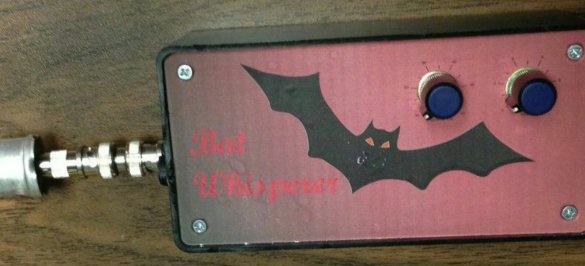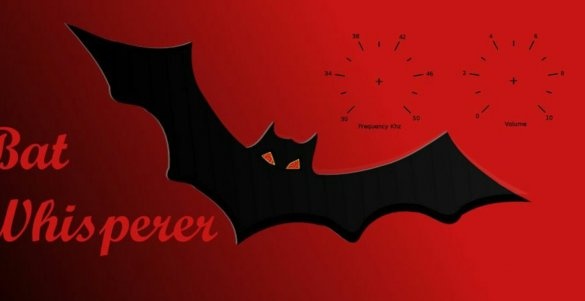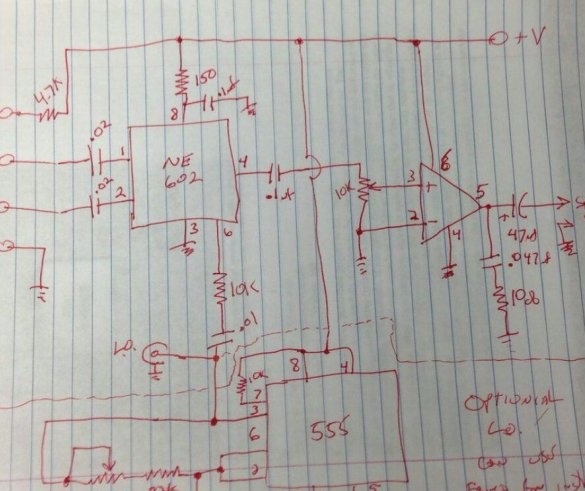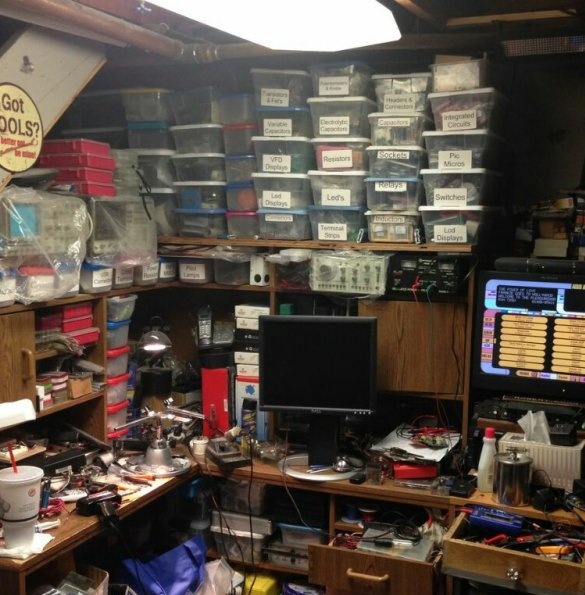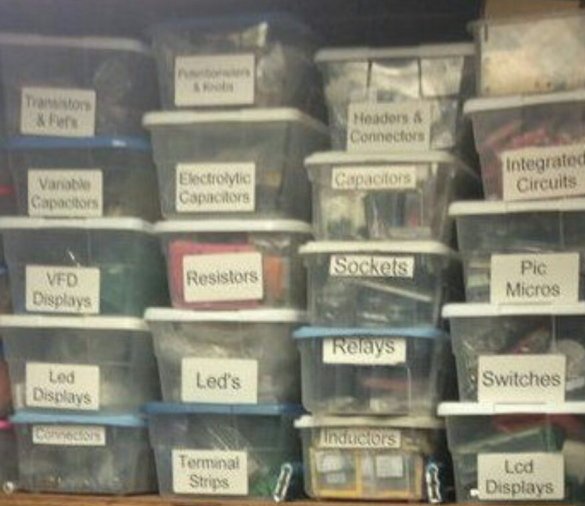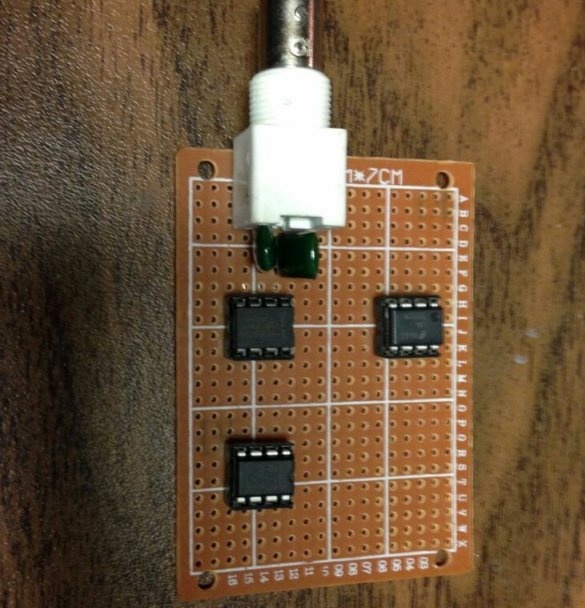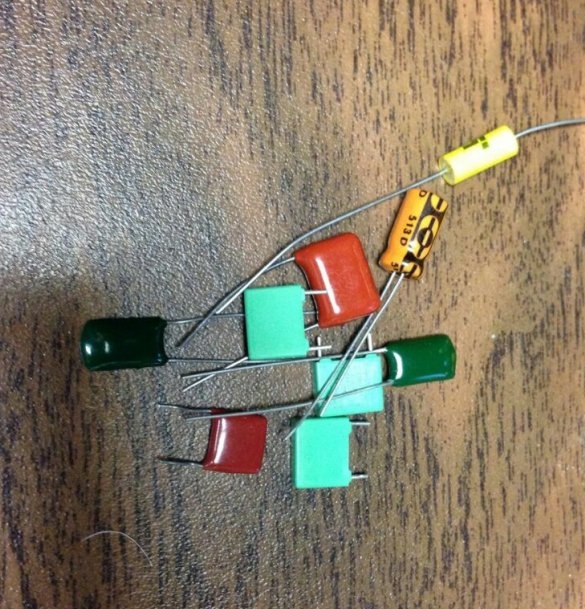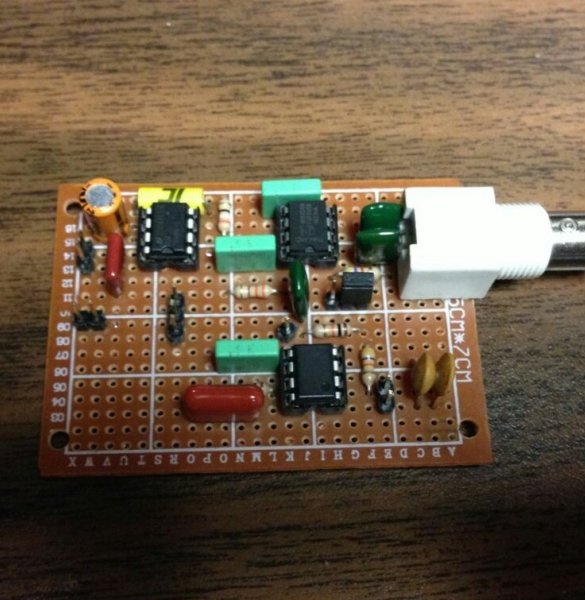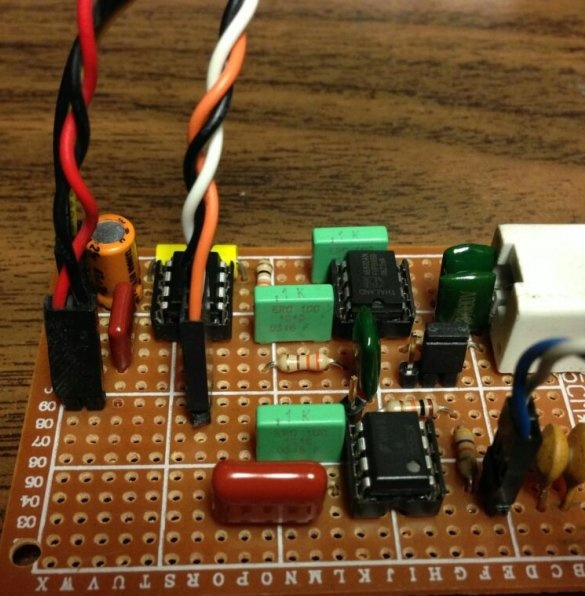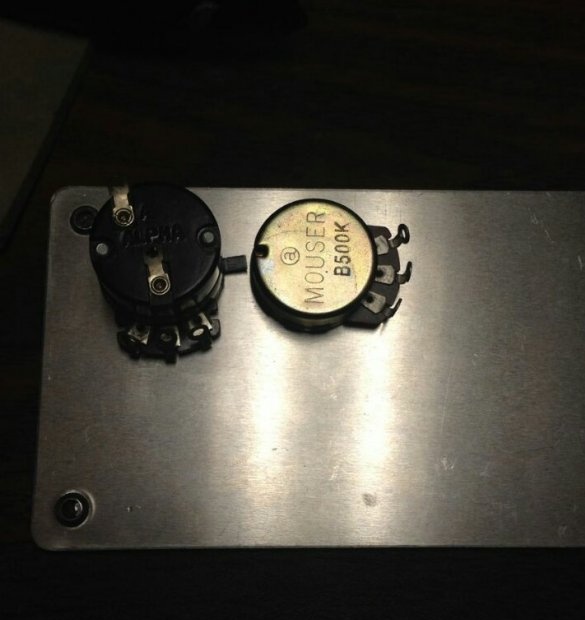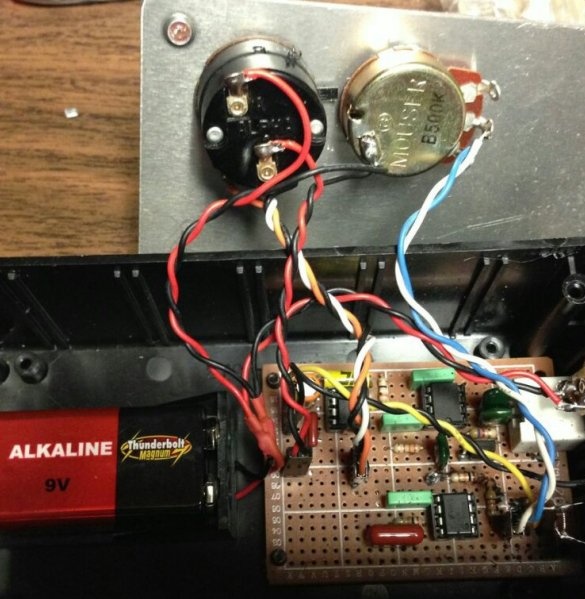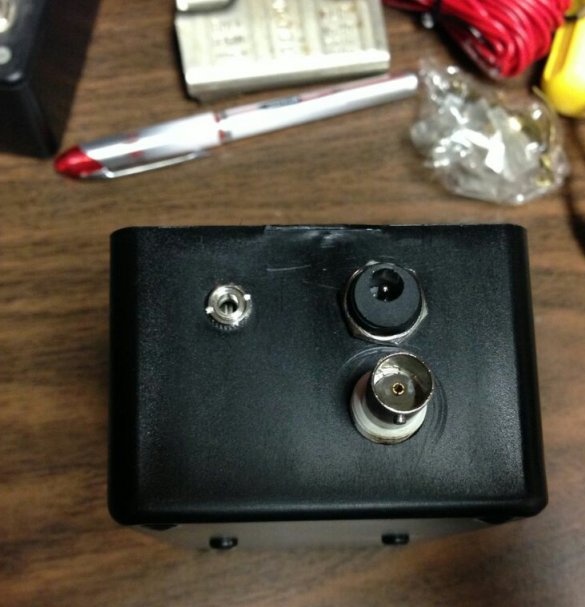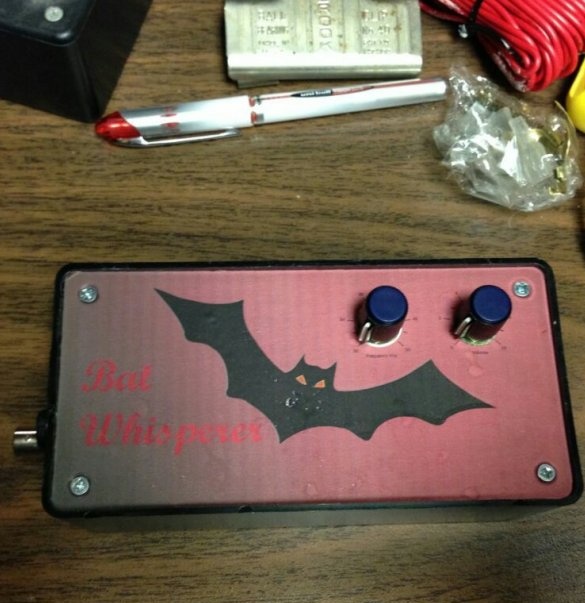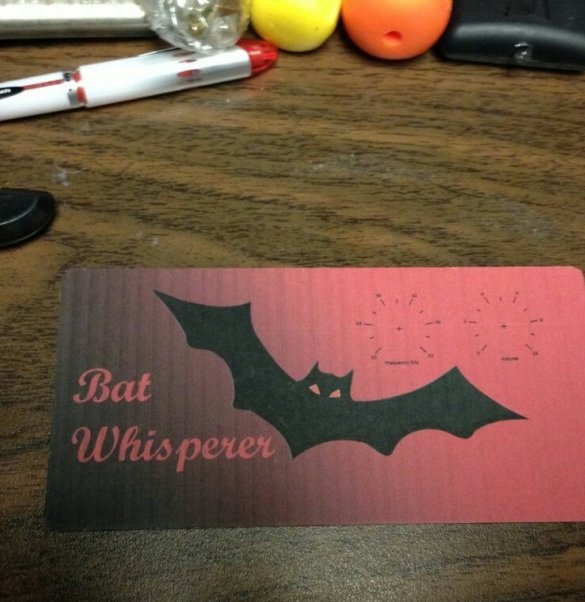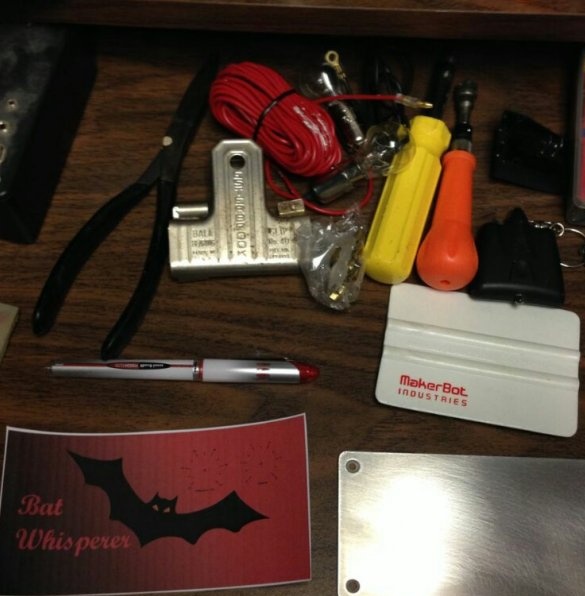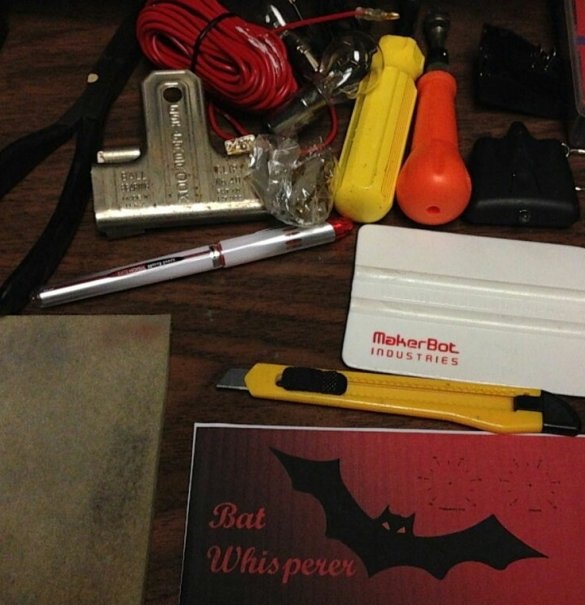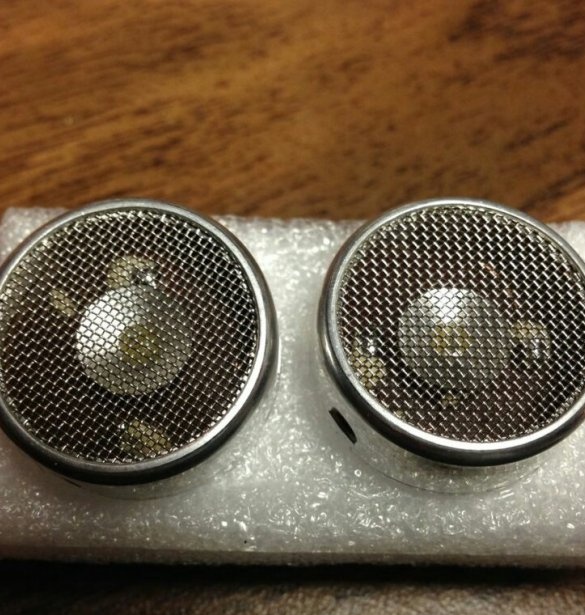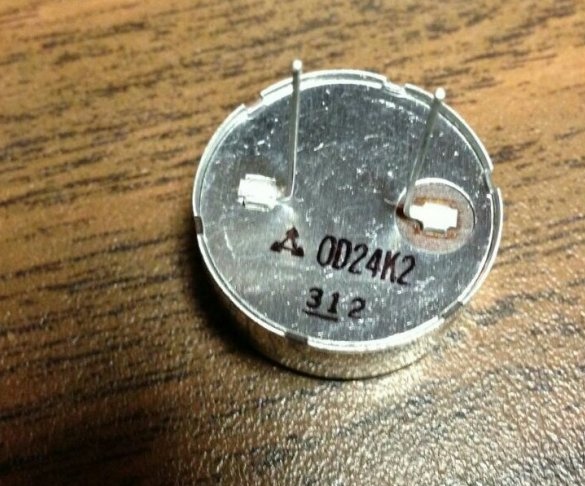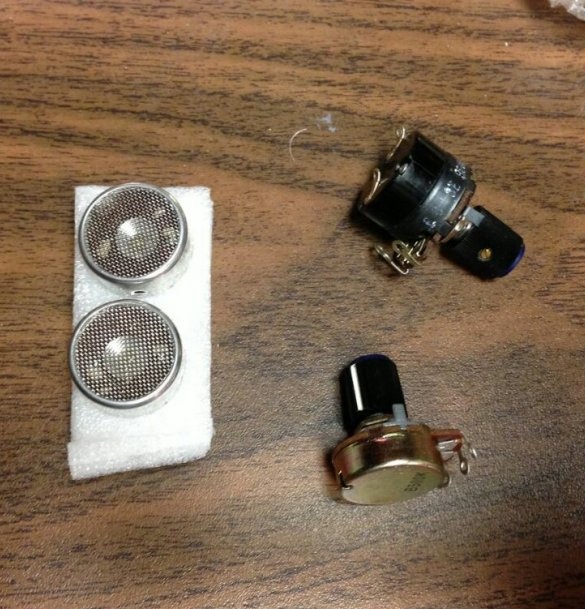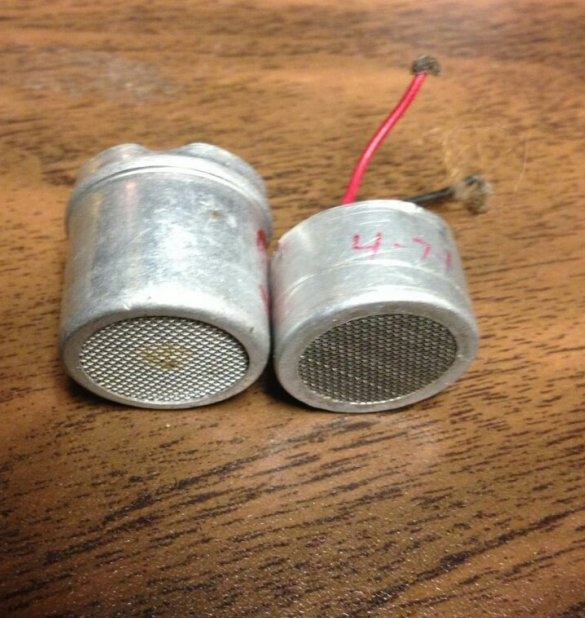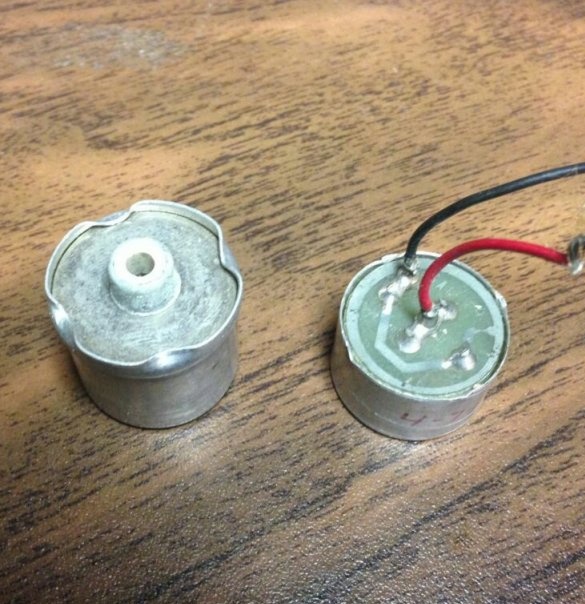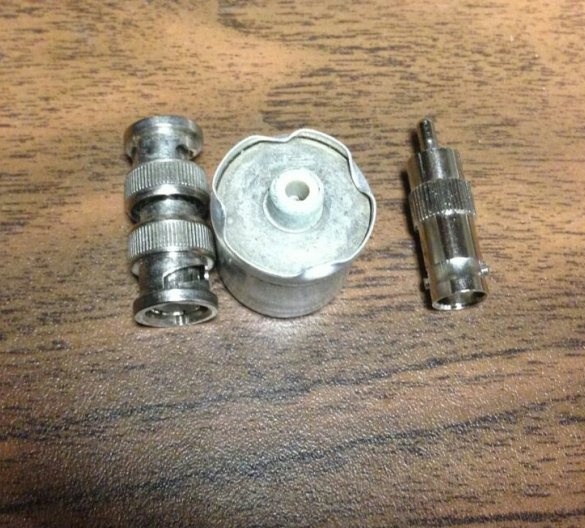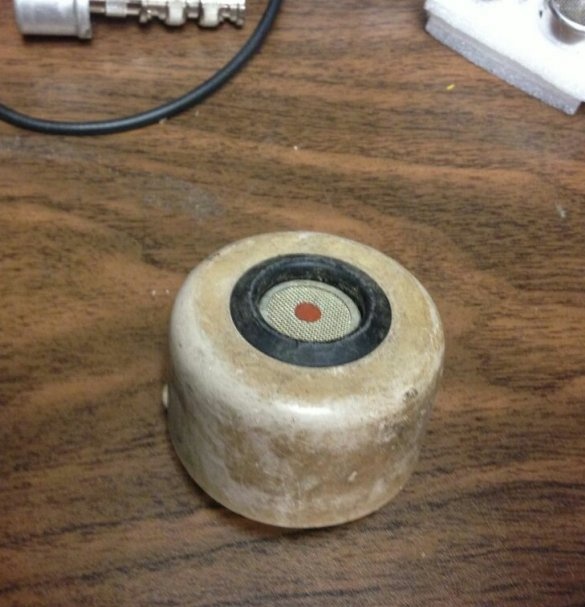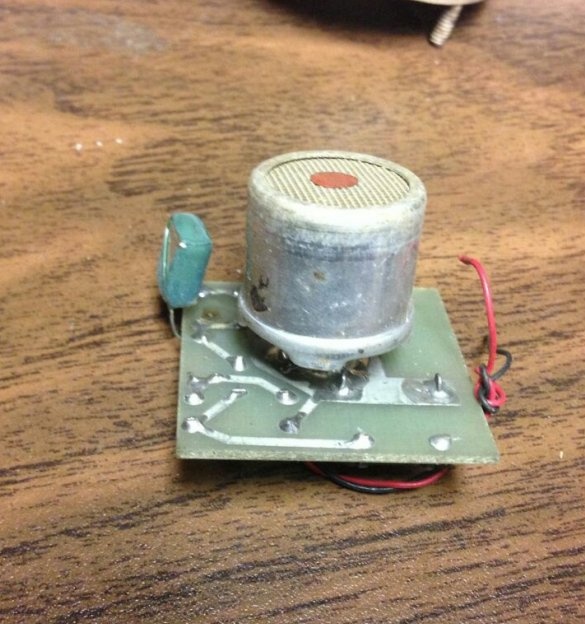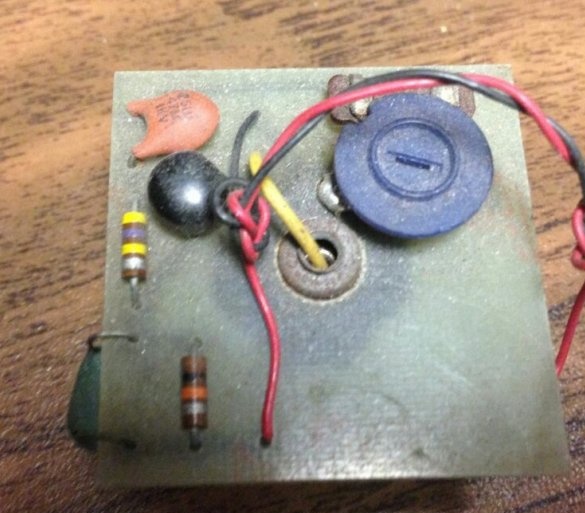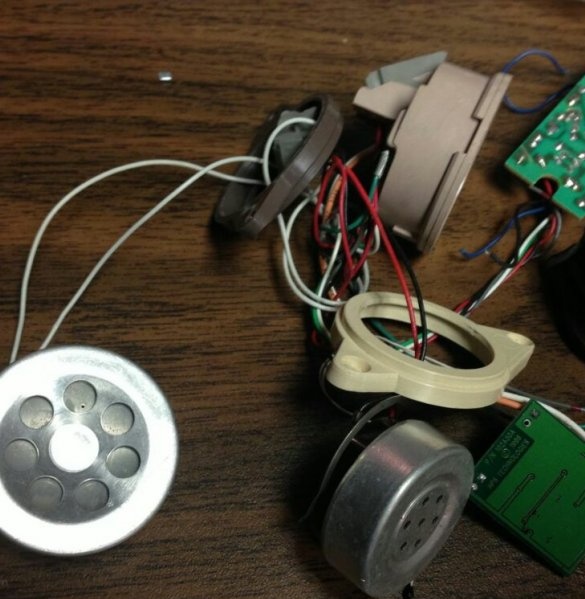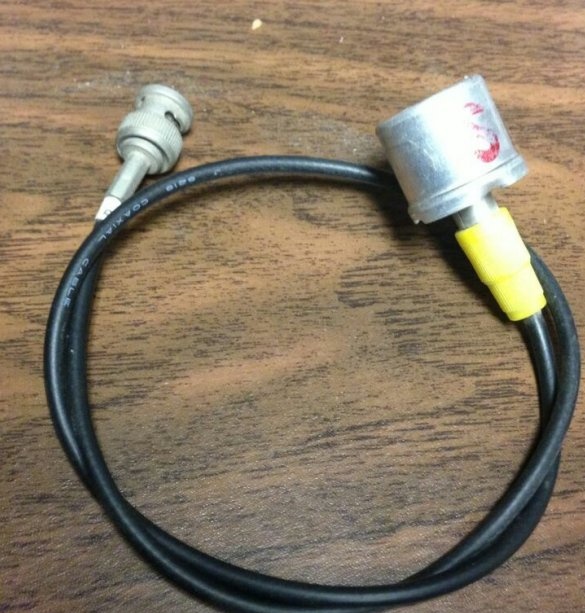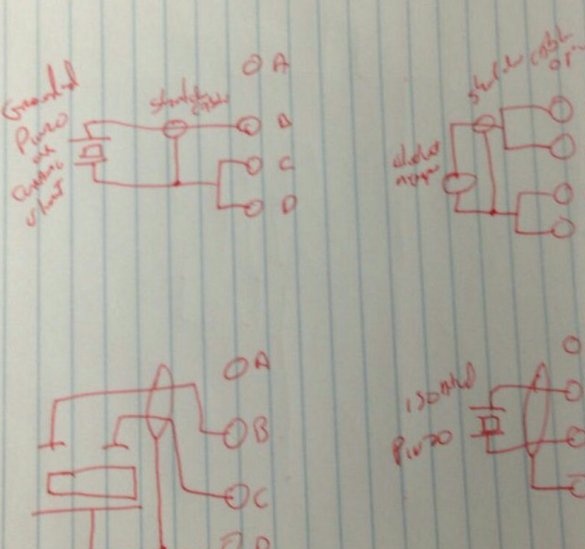You can hear a bat if you transfer a small fragment of the ultrasound spectrum into the audible range according to the principle of a direct conversion receiver. This phrase seems incomprehensible, but the work of the bat detector from the author of Instructables under the nickname rjkorn is based on the simplest mathematical action - subtraction. Let's take a look at the device diagram:
The NE602 chip is a mixer, the local oscillator is made on the 555 chip (KR1006VI1), and the amplifier is made on the LM386 chip (KR1438UN2). The local oscillator operates at a frequency of about 35 kHz. If the bat “says” something at a frequency of, say, 40 kHz, then subtraction will occur, and you will easily hear 5 kHz sound. If the same or another bat "speaks" at a frequency of 39 or 41 kHz, you will hear sound at a frequency of 4 or 6 kHz, respectively. The heterodyne can be rebuilt by shifting the transferred fragment of the ultrasonic range, of course, within the capabilities of the sensor. That’s the whole principle. At first, it is not clear why the mixer has two inputs, and why not only a common wire is present on the input connectors, but also a plus power (connected through a current-limiting resistor). This is for different types of ultrasonic sensors; the master will talk about them later. And the first thing - it boasts of its workshop:
Having bragged enough, the master starts assembling homemade. Installs microcircuits in sockets on a breadboard like perfboard (if you know how to solder well, without sockets), as well as a pair of capacitors and a BNC connector soldered from an old network card. In the new such connectors are no longer only RJ45.
Then the master takes more resistors and capacitors:
It solders them, as well as comb, as it connects everything on the back of the board, does not show.
Connects conductors to the combs:
Installs two variable resistors on the front panel - volume and local oscillator controls. The first one is with a built-in power switch, as in many radios.
Connects them:
Places the board in the case, displays the connectors (one of them is for charging the built-in battery in the Krona format, but for now the master uses the usual, non-rechargeable Krona, but does not install the charging circuit):
And the front panel:
The master tells about the sticker for the front panel separately. He prints it on a film (judging by the strips, the printer was used with an inkjet), and then, after grinding the metal panel slightly, he glues a sticker to it.
Next, the master reveals the secret of the two inputs of the mixer: it turns out, this is one differential input, like an op-amp. The master tries to connect various ultrasound sensors to the homemade product: transducers from the old range finder (similar to the modern one), a three-output piezo emitter, a sound emitter from the old telephone receiver, and a regular electret microphone (this is why the power is output through the resistor), and plans to further try to use a high-frequency piezoelectric transducer from a multiband speaker system with a crossover (low- and mid-frequency heads there are dynamic, high-frequency - piezoelectric I). To supply phantom power to pin B if necessary, the master sets up a removable jumper connecting pins A and B to each other. In this case, the constant voltage will not get to the input of the mixer due to the capacitor. Some types of sensors used by the wizard are shown below.
And these are the diagrams of their connection to the four contacts in the circuit diagram:
This is how a ready-made bat detector looks like:
With the help of the device, the master successfully found an air leak in his truck - it whistles on ultrasound. Ultrasound is emitted (along with an audible sound) and if you just rub two coins against each other. The master also found in himself an old remote control from the TV, emitting not infrared rays, but ultrasound, which was also found. Well, bats ... in general, they are in the courtyard of the master’s house.
The master suggests trying, on the contrary, to transfer in a similar way a fragment of the sound spectrum into the range that bats hear. Will it be possible to tell them something that they will respond to, perhaps train them, teach them how to execute commands like dogs? Only experience will show.

